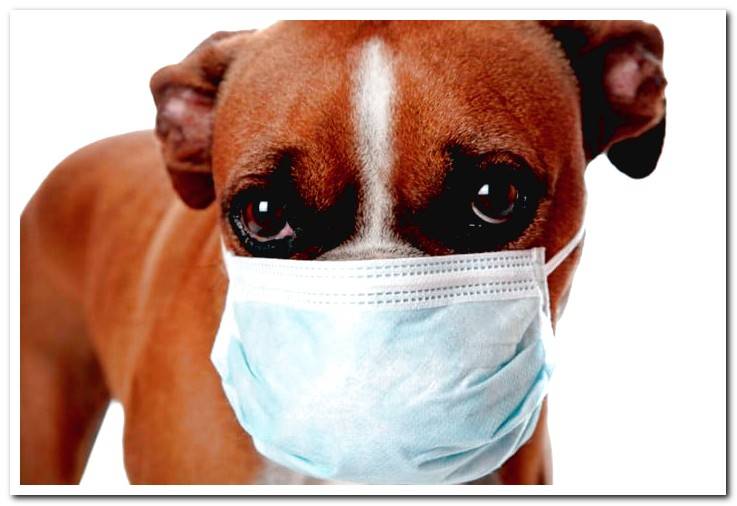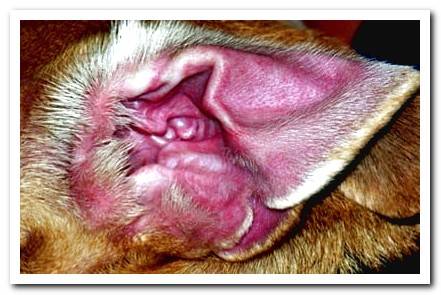
Allergies seem to be increasingly common in dogs. An allergy is an exaggerated reaction of the organism to contact with food or with any component of the environment that, in principle, should not be seen as a threat by the immune system.
The main symptom of allergy is itching. The most frequent allergies in dogs are those caused by flea bites, inhaled allergens and those caused by various foods. Do you want to know the main allergies that can affect your puppy?
Index of contents
- 1 What is an allergy?
- 2 Allergy symptoms in dogs
- 3 Flea Bite Allergic Dermatitis or DAPP
- 4 Atopic dermatitis or canine atopy
- 5 Food Allergy
What is an allergy?
The allergic or hypersensitivity reaction is the one that is triggered by what is called an allergen, which can be any substance. Two exposures usually need to occur.
A first is the one that causes the immune system to generate antibodies. The second is the histamine-producing, antibody-mediated allergic reaction. The organ that is most compromised in dog allergies is the skin.
Hence, the characteristic symptom is intense itching. In the following sections we will explain which are the most common allergies in this species. It seems that some races are more likely to suffer than others.
Allergy symptoms in dogs
The clinical picture will vary depending on the cause of the allergy. In the section corresponding to each one we will detail them. The following signs are those that will appear, generally, in all:
- Intense itching.
- Continuous scratching.
- To feel down.
- Tendency to bite.
- Skin lesions and hair loss.

Flea Bite Allergic Dermatitis or DAPP
The DAPP it is the most common allergy in dogs. It is due to a hypersensitivity reaction to a substance that contains the fleas’ saliva. It produces a lot of itching, which is maintained even if we have eliminated the parasites. It is a more common allergy in the warm months. Although home heating allows fleas to live year-round.
In addition to itching, and as a result of scratching, the skin becomes inflamed, lumps similar to pimples appear, the hair ends up falling off and there may even be crusts and skin infection. In chronic cases the skin thickens and darkens. There are some typical areas that are affected, which are where the most fleas are concentrated.
They are the rump and insertion of the tail and the inguinal and abdominal region. Treatment is based on avoiding contact of the dog with fleas. For this, it is necessary to establish a correct deworming schedule adapted to the circumstances of the dog. Depending on the clinical picture, antibiotics may be prescribed if there is an infection or drugs to control itching.
- Complete information about the DAPP
Atopic dermatitis or canine atopy
This type of allergy has a hereditary basis. It is more common in dogs from one to three years old. The most prone breeds are the Golden, the Labrador, the West Highland white terrier, the Poodle, the Boxer or the Bulldog. It begins being seasonal because it is related to certain pollens. But, in the end, it ends up being produced before more pollens and other allergens.
This makes symptoms remain throughout the year. In addition to itching, sneezing, nasal and eye discharge, skin wounds, hair loss, scabs, infections, thickened and hyperpigmented skin or pictures of otitis are observed. A very typical sign is the continuous licking of the feet, which causes brown spots to form in the area.
These dogs are also often allergic to fleas. Treatment focuses on controlling the symptoms, since it is not possible to completely avoid contact with allergens. Currently, immunotherapy is being worked on with the aim of achieving hyposensitization, that is, that the reaction towards the allergen is less and less.

Food Allergy
A food allergy can appear in dogs of any age. It is triggered by multiple foods. For example, meat, milk, eggs, fish, cereals, potatoes, or soybeans. The reaction occurs after one or more exposures. So, it can manifest itself as soon as we offer new food. But also in a dog that has spent years eating the same.
There is intense itching and small red bumps, especially on the ears, feet, back of the legs and lower body. To diagnose and treat this problem, a specific hypoallergenic diet is prescribed for that dog. Ideally, its ingredients are few and also consist of food that the dog has never eaten.
Although feeds with these characteristics are manufactured, a homemade diet is usually chosen. At least at the beginning of the treatment. The improvement, if applicable, confirms the diagnosis. But for this the new menu should be offered for about ten weeks. Other foods can be introduced little by little, so that it is possible to identify if any one is responsible for the reaction.
- All about food allergy in dogs
